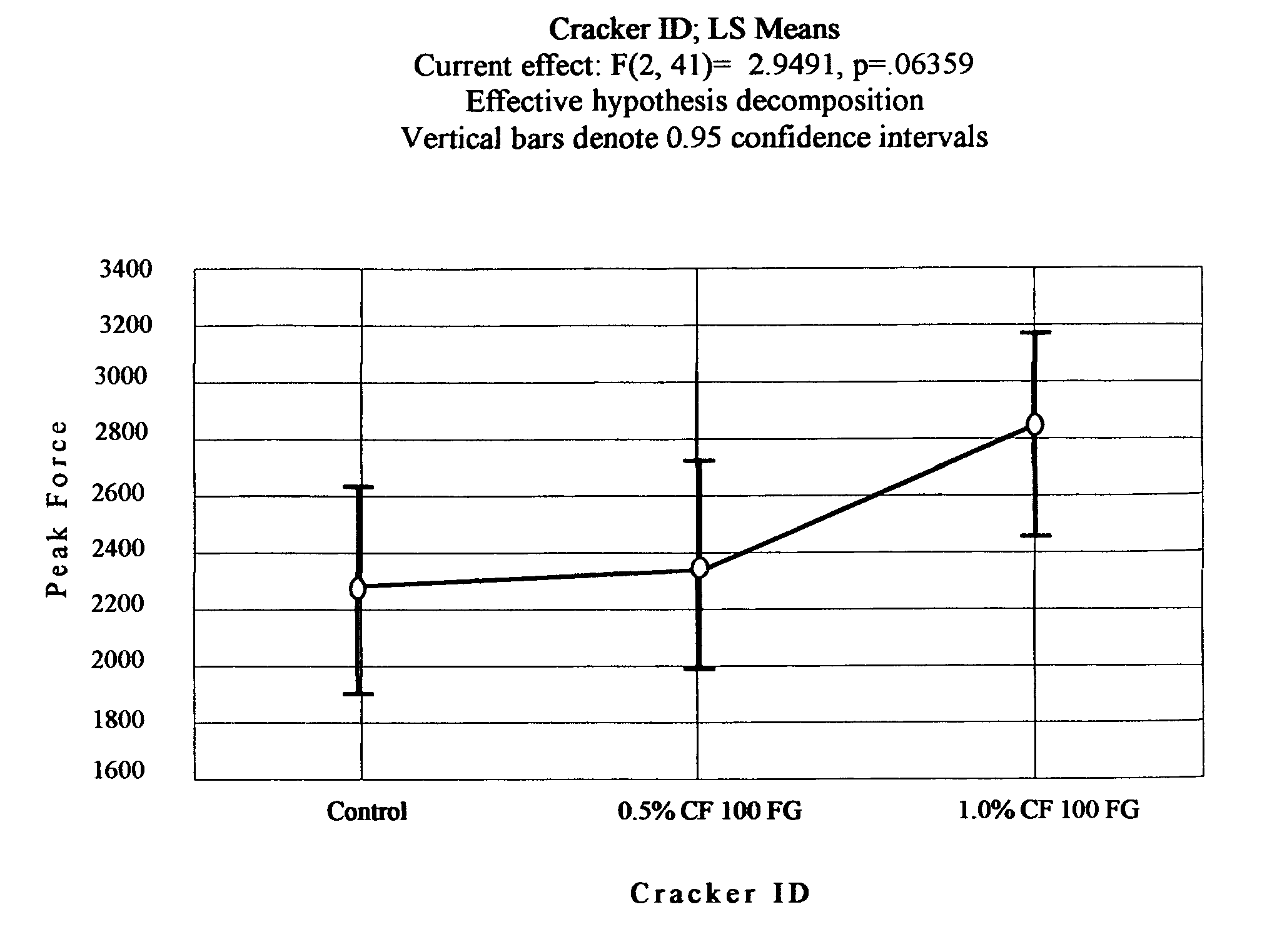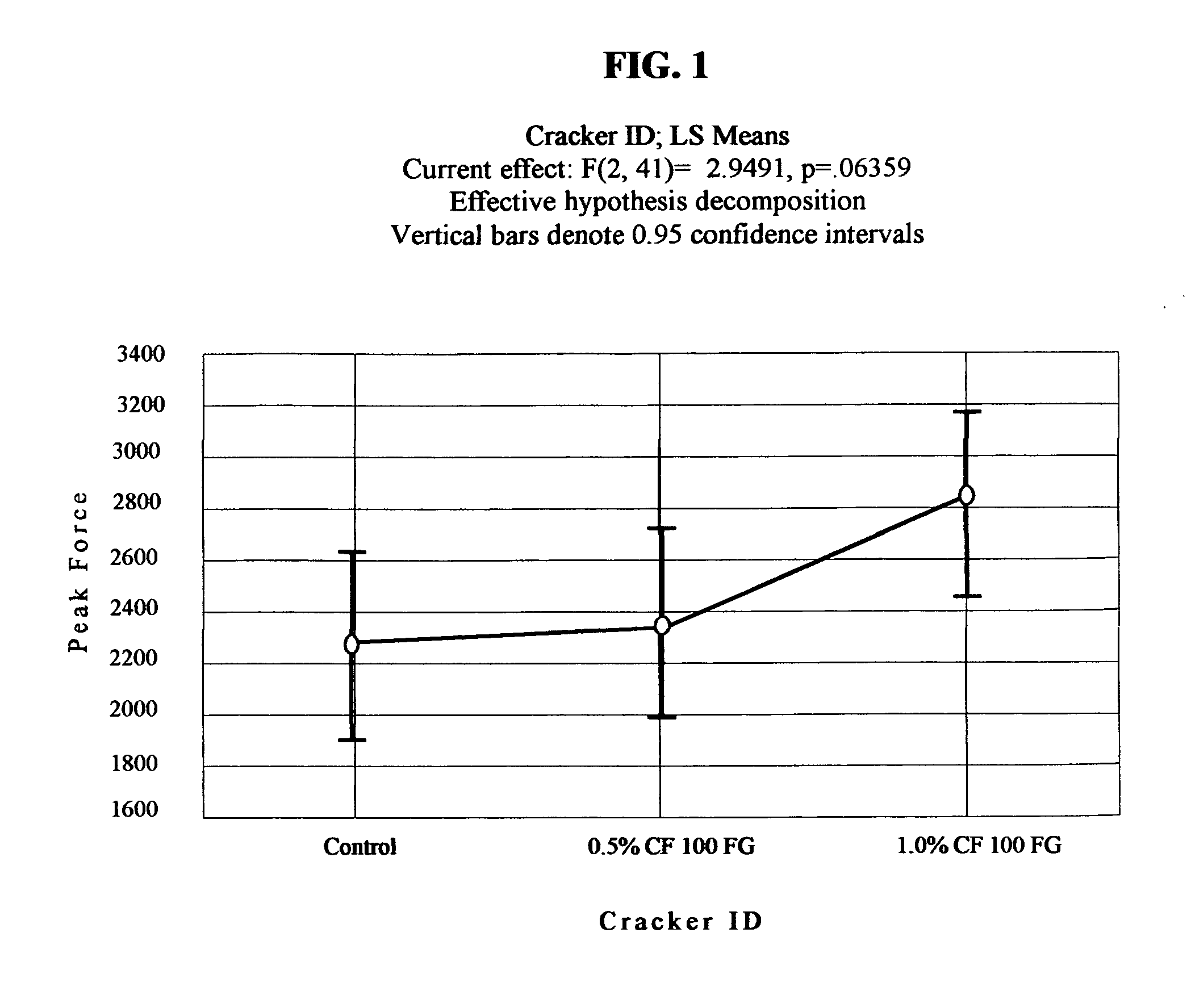Moisturizing composition for protein materials
a technology of protein and composition, applied in the field of food products, can solve the problems of increasing the amount of saturated fat, patents do not give a method for drying the product, and do not disclose the combination of water, fiber and shortening directly together to make a reduced fat shortening, oil, margarine, or butter., to achieve the effect of enhancing the moisture retention of the food produ
- Summary
- Abstract
- Description
- Claims
- Application Information
AI Technical Summary
Benefits of technology
Problems solved by technology
Method used
Image
Examples
example i
[0123]Turkey breast meat was ground using a ⅜ inch plate. The pH of the raw meat was then measured. Next, aqueous treatment solutions were prepared of one of the following components: anhydrous sodium metasilicate (SMS) having a ratio of 1 (e.g., wherein m is 1 and M is sodium), sodium hydroxide (NaOH), or Sodium Carbonate (Na.sub.2CO.sub.3). The treatment solutions were prepared using salt, water and one of the above listed components to yield concentrations of 0.2, 0.4, 0.6, and 0.8% w / w of the component in the treated meat. Control 1 was prepared using a treatment solution of water and salt, only, i.e. no additional active ingredients such as phosphate, hydroxide, carbonate, or alkali silicates. Controls 2 and 3 were prepared using dextrose as a filler, water, and salt. However, no additional active ingredients were used in Controls 2 or 3 either. The concentration of dextrose was at 0.3% w / w and 0.7% w / w respectively. Table 1A below shows the recipe for the various treatment sol...
example 1
[0124]Dried beet pulp shreds were obtained from a local feed store. The beet pulp was then ground to a powder using a disk mill or refiner. One particularly useful plate refiner is manufactured by Sprout Waldron of Muncy, Pa. and is Model 12-ICP. This plate refiner has a 60 horsepower motor that operates at 1775 rpm. After the dry materials were ground, they were soaked in hot water at 100° C. for 5 minutes at 5% solids, where the materials started to absorb moisture. The soaked materials were then washed with water in a screen cart to remove any unwanted particulate or soluble materials. After soaking, the materials were diluted to 3% solids and bleached in a 150 gallon (555 liter) tank with agitation. The bleaching conditions were 15% hydrogen peroxide (based on dry matter weight), a pH of 11.5, and a temperature of 80° C. for one hour. After bleaching, the material was then washed in a screen cart. After bleaching, the materials were then refined again at 3% solids using the same...
citrus examples 2-6
Example 2
[0126]Frozen washed orange pulp cells were obtained from Vita Pakt (Covina, Calif.). Hot water was added to the frozen pulp to thaw the pulp. After thawing, the materials were dewatered on a screen to remove any excess water and bring the solids content to 5%. The thawed and screened materials were refined using a Sprout Waldron disk mill (Muncy, Pa.), Model 12-ICP. The refined materials were then dispersed at 5% solids at 50,000 sec−1 shear rate using an IKA Dispax™ Reactor, Model DR 3-6A (Wilmington, N.C.). Viscosity was then measured using a Brookfield LVDV++ viscometer (Middleboro, Mass.) with cylindrical spindles.
PUM
 Login to View More
Login to View More Abstract
Description
Claims
Application Information
 Login to View More
Login to View More - R&D
- Intellectual Property
- Life Sciences
- Materials
- Tech Scout
- Unparalleled Data Quality
- Higher Quality Content
- 60% Fewer Hallucinations
Browse by: Latest US Patents, China's latest patents, Technical Efficacy Thesaurus, Application Domain, Technology Topic, Popular Technical Reports.
© 2025 PatSnap. All rights reserved.Legal|Privacy policy|Modern Slavery Act Transparency Statement|Sitemap|About US| Contact US: help@patsnap.com


